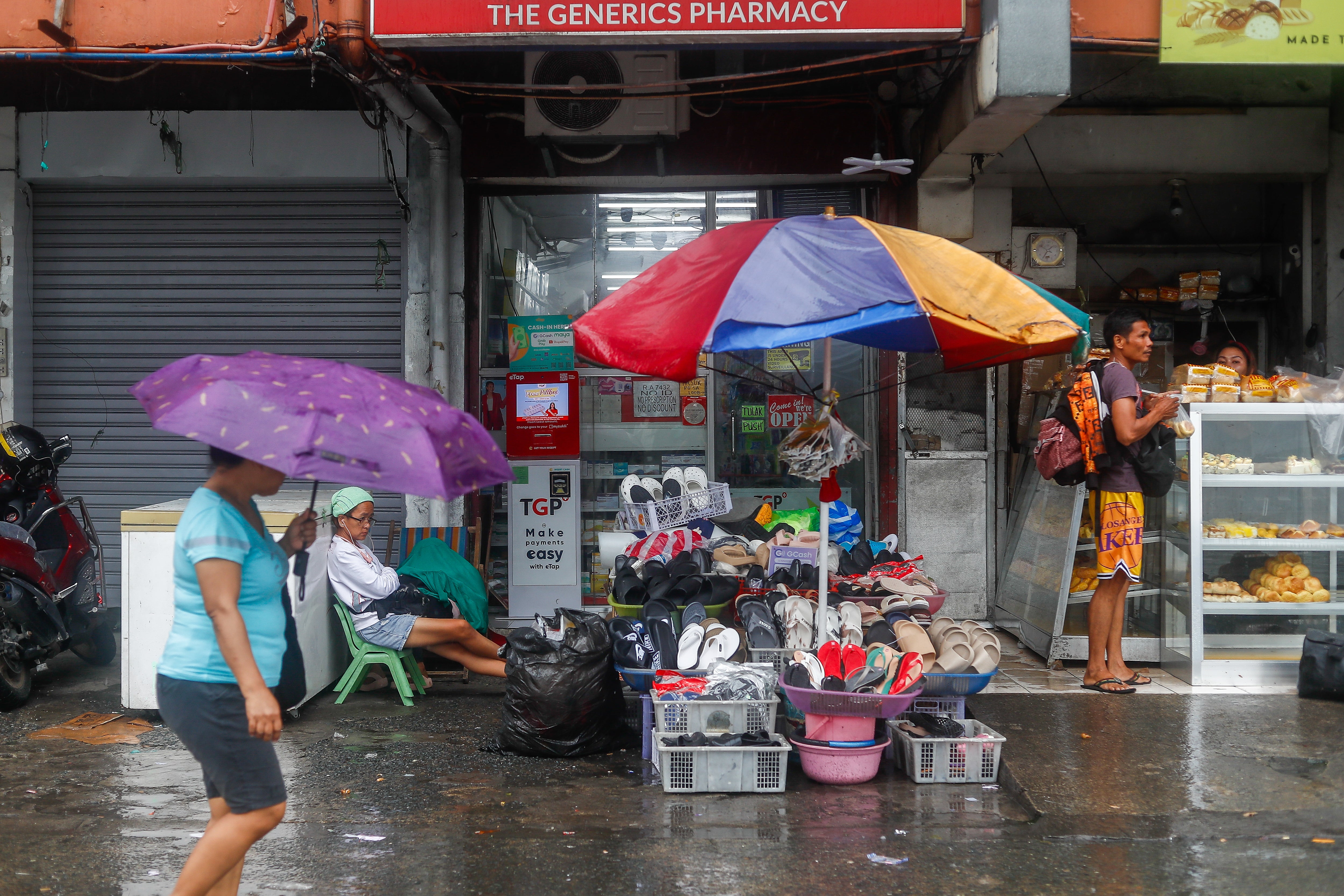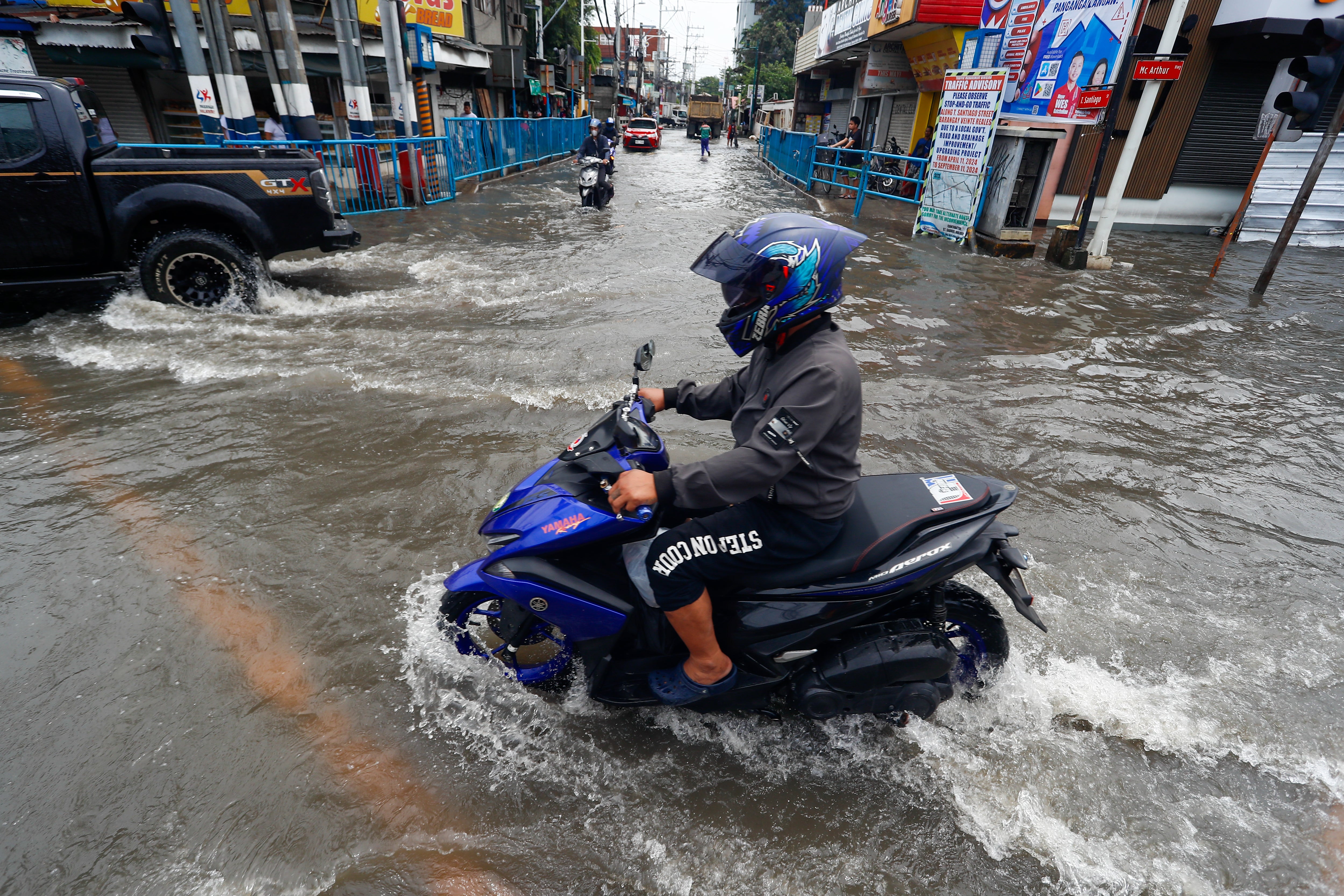Tropical storm Yagi prompts flood warnings and shuts schools in Philippines
Yagi expected to make landfall over northern Luzon before moving towards southern China later in the week

Your support helps us to tell the story
From reproductive rights to climate change to Big Tech, The Independent is on the ground when the story is developing. Whether it's investigating the financials of Elon Musk's pro-Trump PAC or producing our latest documentary, 'The A Word', which shines a light on the American women fighting for reproductive rights, we know how important it is to parse out the facts from the messaging.
At such a critical moment in US history, we need reporters on the ground. Your donation allows us to keep sending journalists to speak to both sides of the story.
The Independent is trusted by Americans across the entire political spectrum. And unlike many other quality news outlets, we choose not to lock Americans out of our reporting and analysis with paywalls. We believe quality journalism should be available to everyone, paid for by those who can afford it.
Your support makes all the difference.A tropical storm unleashed heavy rains across the northern Philippines over the weekend, triggering floods and landslides and prompting the closure of schools in the capital region.
Yagi, locally known as Enteng, was moving northwest with maximum sustained winds of 75km/h and gusts up to 90km/h, bringing dangerous weather conditions to the region.
In Naga city in Camarines Sur province, floods caused by the storm claimed at least one life and authorities were verifying if other reported deaths were weather-related.
The eastern city was hit hard, with floodwaters rising several feet and prompting the rescue of hundreds of residents. A nine-month-old girl was killed as the area was inundated, AFP news agency quoted officials as saying.
In the province of Northern Samar, the Philippine coast guard evacuated 40 people from two flood-stricken villages on Sunday, with the waters reaching waist-height.
The storm also disrupted operations at several ports, stranding 2,400 ferry passengers and cargo workers.
Nearly two dozen domestic flights were suspended as well.
Rains brought by the storm triggered landslides in the central city of Cebu, killing at least two people and damaging several houses.
The severe weather forced the closure of schools and government offices in Manila and the surrounding provinces of Bulacan and Quezon.

The Ipo Dam in Bulacan province, north of Manila, was close to overflowing. Authorities planned to release some of the water later on Monday, assuring that their action would not pose a risk to downstream villages.
Authorities were also monitoring the Marikina river in Manila, where water levels were rising and people in flood-prone areas were warned to prepare for possible evacuation.
Yagi was expected to make landfall in the northern Luzon region, possibly in Isabela or Cagayan, before moving towards southern China later in the week.
The Philippine weather bureau, Pagasa, warned of potential flash floods, landslides and coastal waves as the storm continued to affect the region.
Yagi arrived just days after heavy monsoon rains flooded parts of Manila and barely a month after typhoon Gaemi.
Gaemi didn’t make landfall in the Philippines but interacted with the southwest monsoon to cause heavy winds and torrential rainfall. At least 48 people were killed, with around 6.5 million affected by the severe conditions.
The Philippines experiences about 20 typhoons and storms a year. The archipelago's location in the "Pacific Ring of Fire" makes it one of the world's most disaster-prone countries, regularly facing devastating volcanic eruptions, earthquakes and cyclones.
Join our commenting forum
Join thought-provoking conversations, follow other Independent readers and see their replies
Comments